Science & Environment
We may have spotted a parallel universe going backwards in time


IN THE Antarctic, things happen at a glacial pace. Just ask Peter Gorham. For a month at a time, he and his colleagues would watch a giant balloon carrying a collection of antennas float high above the ice, scanning over a million square kilometres of the frozen landscape for evidence of high-energy particles arriving from space.
When the experiment returned to the ground after its first flight, it had nothing to show for itself, bar the odd flash of background noise. It was the same story after the second flight more than a year later.
While the balloon was in the sky for the third time, the researchers decided to go over the past data again, particularly those signals dismissed as noise. It was lucky they did. Examined more carefully, one signal seemed to be the signature of a high-energy particle. But it wasn’t what they were looking for. Moreover, it seemed impossible. Rather than bearing down from above, this particle was exploding out of the ground.
That strange finding was made in 2016. Since then, all sorts of suggestions rooted in known physics have been put forward to account for the perplexing signal, and all have been ruled out. What’s left is shocking in its implications. Explaining this signal requires the existence of a topsy-turvy universe created in the same big bang as our own and existing in parallel with it. In this mirror world, positive is negative, left is right and time runs backwards. It is perhaps the most mind-melting idea ever to have emerged from the Antarctic ice – but it might just be true.
The ambitions…
Science & Environment
SpaceX launches 21 Starlink satellites, but rocket’s first stage crashes on landing barge

After standing down from the piloted Polaris Dawn launch late Tuesday, SpaceX shifted gears and pressed ahead with plans for back-to-back launches of Starlink internet satellites early Wednesday, one from Florida and the other from California.
But the second flight was called off after the first stage used in the Florida launch toppled into the Atlantic Ocean and broke apart while attempting to land on a SpaceX droneship stationed several hundred miles northeast of Cape Canaveral. The landing mishap ended a string of 267 successful booster recoveries dating back to February 2021.
The Falcon 9’s second stage, meanwhile, successfully carried 21 Starlink satellites to their planned orbit.
The first stage landing appeared normal until the moment of touchdown when more flames than usual were visible around the base of the rocket as it neared the deck. A landing leg immediately collapsed on touchdown and the booster, obscured by fire and smoke, tipped over the side of the landing barge into the Atlantic.
“After a successful ascent, Falcon 9’s first stage booster tipped over following touchdown on the A Shortfall of Gravitas droneship,” SpaceX said on the social media site X. “Teams are assessing the booster’s flight data and status.”
It was first stage B1062’s 23rd and what turned out to be final launch and landing, a new reuse record. SpaceX is working toward certifying its Falcon 9 first stages for up to 40 flights each.
Shortly after the Starlinks launched from Florida were deployed, SpaxeX called off the California launch, planned for 5:58 a.m. EDT, to give engineers more time to review telemetry and video footage, on the lookout for any signs of trouble that could affect other rockets.
“Standing down from our second @Starlink launch of the night to give the team time to review booster landing data from the previous launch,” SpaceX said on X. “A new target launch date will be shared once available.”
Here are updated Falcon 9 stats through through this morning’s Florida launch:
Total Falcon 9 launches to date: 367
Total Falcon Heavy launches to date: 10
Total Super Heavy/Starship launches to date: 4
Falcon 9/Heavy launches this year: 83 (82 F9s, 1 FH)
In-flight Falcon 9/Heavy failures: 2 (06/28/15, 07/11/24)
Successful Falcon 9/Heavy launches in a row: 13
Most successful flights in a row: 344 (between 6/28/15 and 07/11/24)
Starlink launches to date: 190 (181 dedicated flights, 9 mixed payloads)
Starlink launches this year: 58
Starlink satellites launched to date: 6,920
Starlinks with direct-to-cell capability: 136
Starlinks presumed to be working going into latest launch: 6,269*
Payloads launched to orbit this year by SpaceX: 1,548
First stage fleet leader: B1062, 23 flights (booster lost on landing)
California landings to date: 20
Florida landings to date: 54
Droneship landings to date: 267 (not counting today’s flight)
Successful booster landings overall: 341
Successful booster landings in a row: 267 (before today’s flight)
*Source: https://planet4589.org/space/con/star/stats.html
Science & Environment
FAA grounds SpaceX Falcon 9 rockets pending investigation of rare offshore crash-landing
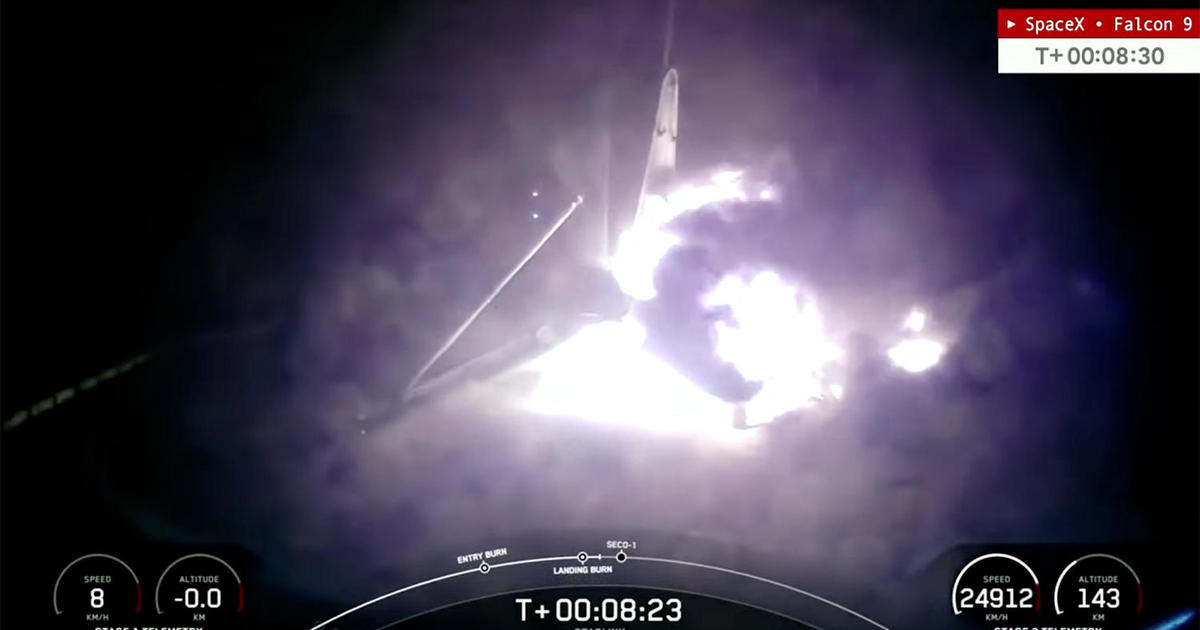
The Federal Aviation Administration has grounded SpaceX’s Falcon 9 rockets pending an investigation to determine what caused a first-stage booster to crash onto a landing barge early Wednesday after helping launch another batch of Starlink internet satellites.
After standing down from the piloted Polaris Dawn launch late Tuesday because of an unfavorable long-range forecast, SpaceX pressed ahead with the first of two planned back-to-back launches of Starlinks, one from Florida and the other from California.
But the second flight was called off after the first stage used in the Florida launch crash-landed and toppled into the Atlantic Ocean while attempting to touch down on a SpaceX droneship stationed several hundred miles northeast of Cape Canaveral.
The FAA said it would require an investigation, effectively grounding SpaceX’s Falcon 9 rockets — including the Polaris Dawn booster — until the probe is complete and corrective actions are approved.
“A return to flight of the Falcon 9 booster rocket is based on the FAA determining that any system, process or procedure related to the anomaly does not affect public safety,” the FAA said in a statement.
“In addition, SpaceX may need to request and receive approval from the FAA to modify its license that incorporates any corrective actions and meet all other licensing requirements,” the agency said.
Late Tuesday, SpaceX delayed Wednesday’s planned launch of the Polaris Dawn mission, a commercial flight featuring what will be the first non-government spacewalk, to Friday at the earliest because of predicted end-of-mission splashdown weather. The launching now is on indefinite hold pending the landing mishap investigation.
The landing failure ended a string of 267 successful booster recoveries in a row dating back to February 2021. The Falcon 9’s second stage, however, successfully carried 21 Starlink internet satellites to their planned orbit.
The first stage landing appeared normal until the moment of touchdown when more flames than usual were visible around the base of the rocket as it neared the deck. A landing leg immediately collapsed on touchdown and the booster, obscured by fire and smoke, tipped over the side of the landing barge into the Atlantic Ocean.
“After a successful ascent, Falcon 9’s first stage booster tipped over following touchdown on the A Shortfall of Gravitas droneship,” SpaceX said on social media. “Teams are assessing the booster’s flight data and status.”
It was first stage B1062’s 23rd and what turned out to be its final launch and landing, a new reuse record. SpaceX is working toward certifying its Falcon 9 first stages for up to 40 flights each.
Shortly after the Florida Starlinks were deployed, the company called off the California launch, planned for 5:58 a.m. EDT, to give engineers more time to review telemetry and video footage, on the lookout for any signs of trouble that could affect other rockets.
“Standing down from our second @Starlink launch of the night to give the team time to review booster landing data from the previous launch,” SpaceX said. “A new target launch date will be shared once available.”
Science & Environment
It’s a shark eat shark world. Researchers find evidence that large sharks may be hunting each other.
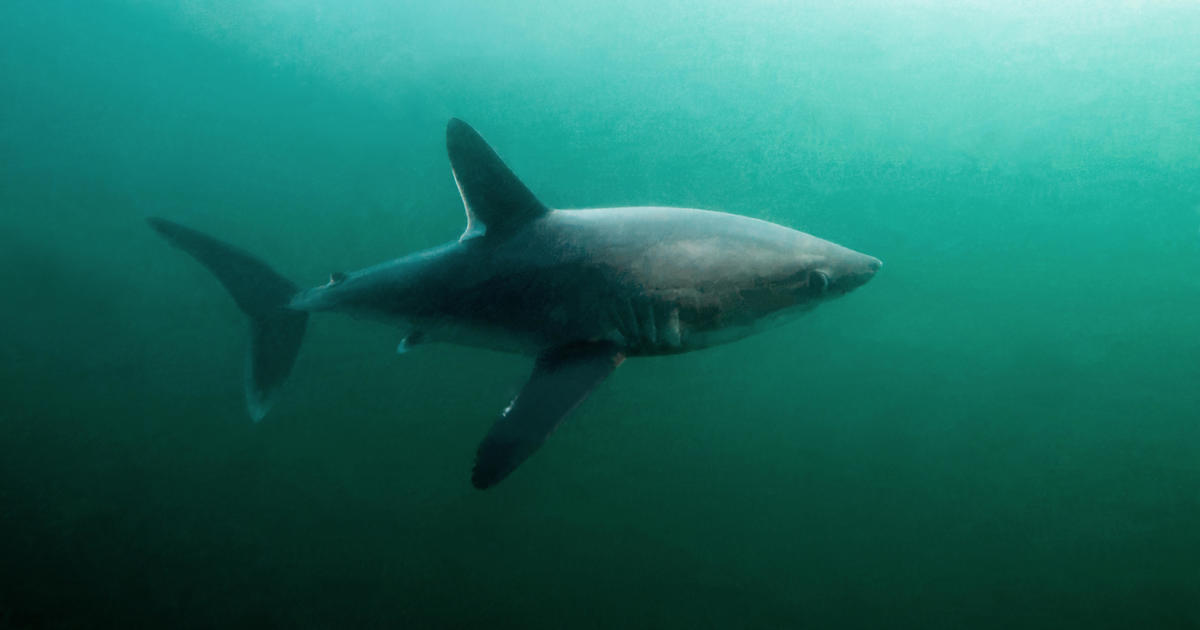
In the ocean food chain, large sharks generally only have to worry about keeping orcas at bay — but a new study suggests the apex predators may have to watch out for their own.
Researchers have discovered evidence pointing to the first known case of a porbeagle shark — which can grow up to 12 feet long and 500 pounds — being killed by a large shark predator. The findings were published Tuesday in the biology journal Frontiers in Marine Science.
This isn’t the first case of “shark cannibalism,” said Jon Dodd, executive director of the Atlantic Shark Institute, which helped lead the study. Larger sharks eating smaller sharks is a common occurrence, “in the open ocean, size matters, but there is always something bigger,” he said.
In some cases — bull sharks, mako sharks and baby sand tiger sharks, for example — sharks will even eat their own species.
But cases of large sharks eating other large sharks, the subject of this study, are few and far between, said lead author Dr. Brooke Anderson, a marine biologist for the North Carolina Department of Environmental Quality.
The fatality of the female porbeagle raises questions about whether this incident represents a wider trend among large predators, said Anderson. “With the advancements in technology, it’s possible that this happens more frequently than we’ve just really been able to discover,” said Anderson.
The number of sharks eaten by other sharks is impossible to know, said Dodd adding, “but if our experiences at the Atlantic Shark Institute are an indicator, it might be more than we think.”
A group of scientific researchers from across the U.S. discovered the porbeagle death while conducting a satellite tracking project in the Northwestern Atlantic to better understand the shark species’ whereabouts, behaviors and environmental preferences. They were particularly curious about female porbeagles, which are known to traverse long swaths of the ocean to deliver their pups.
“We were really seeking to understand the habitats used by the pregnant females and try to figure out where they might be going to give birth,” said Anderson.
The victim of the attack, nicknamed Penelope by researchers, was one of the 11 sharks scientists tagged off the coast of Cape Cod in 2020 and 2022. Tracking tags were placed on the dorsal fins of the sharks and used to collect information on water depth and temperature. The tags stored the data until they eventually fell off the sharks, at which point the data was transmitted back to the researchers via satellite.
The tracking devices were designed to stay on for a year, but five months into the experiment, Penelope’s data had already come in. “As soon as I got the data from that tag, I immediately knew something weird had happened,” Anderson said.
A few days before Penelope’s tag popped off along the coast of Bermuda, the temperature of the water suddenly spiked. It remained relatively high, even when it reached 600 meters below sea level, which is “very unusual,” Anderson explained.
Anderson and her colleagues came to a harrowing conclusion: the porbeagle had been hunted and eaten by another behemoth of the sea. “The only explanation for that data is that this tab is now in the stomach of a predator,” Anderson told CBS News.
Researchers don’t know with 100% certainty what the culprit was, but the diving pattern of the predator, which researchers tracked by looking at the depth data collected by the tag, was similar to that of white sharks they’ve monitored in the past. “Based on that, it was likely, I’d guess, a mature female white shark,” said Anderson.
Porbeagles, which have historically been overfished, are considered endangered in certain parts of the world. Given they are already at risk, Anderson said the loss of pregnant females and their babies could prove devastating to the population.
And sharks aren’t the only ones that could feel the ripple effects of this change. The rulers of the deep maintain the balance of the underwater ecosystem by keeping smaller predator populations in check and adding vital nutrients to shallow waters.
“Humans heavily rely on oceans for food and many other things and the oceans need healthy shark populations,” Anderson said.
Science & Environment
Missouri patient contracts bird flu despite no known contact with animals
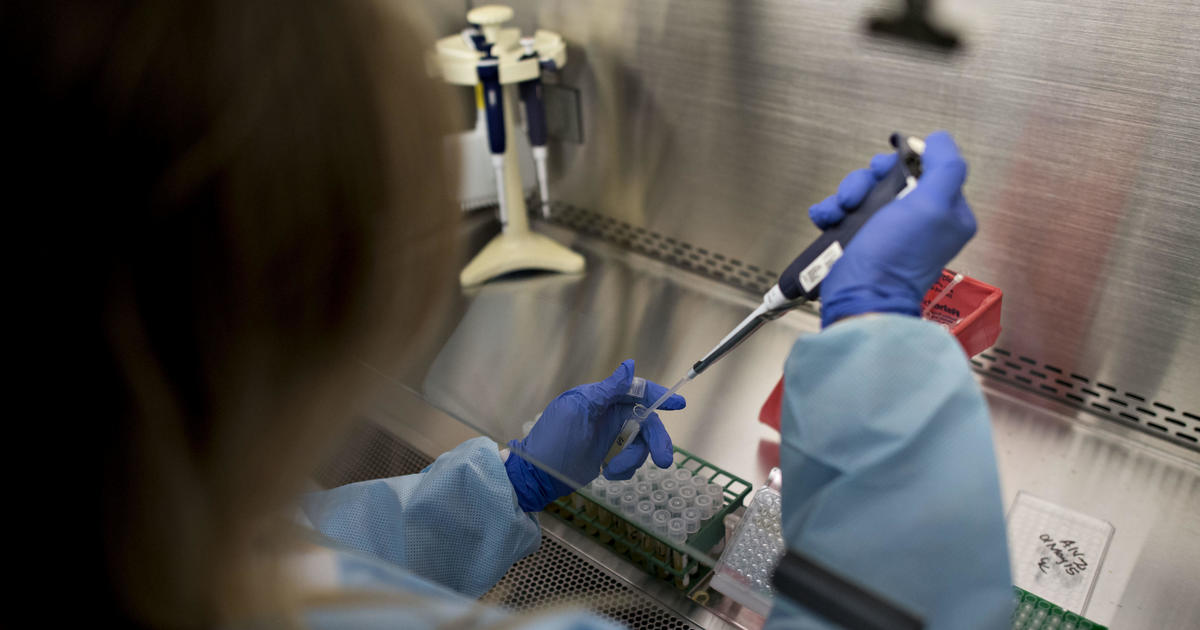
A hospitalized patient in Missouri was infected with bird flu despite having had no known contact with dairy cows or other animals associated with an ongoing outbreak, health officials said Friday.
This is the 14th person in the U.S. sickened with bird flu since March, when the virus was detected in cows, after infecting wild birds and mammals worldwide. One other person was infected in 2022.
However, the U.S. Centers for Disease Control and Prevention said in a statement that it was the first of those 14 “without a known occupational exposure to sick or infected animals.”
The risk to the general public remains low, the CDC said. No unusual flu activity has been detected in the U.S., including in Missouri, officials said.
The latest case was confirmed after the person, an adult, was hospitalized on Aug. 22 with other medical conditions, officials with the Missouri Department of Health and Senior Services said in a statement.
The person tested positive for influenza A, and CDC officials later confirmed it to be bird flu. The person received antiviral medication and has since recovered and gone home, health officials said.
It’s not clear whether the hospitalization was caused by the bird flu infection or the person’s existing health conditions, said Lisa Cox, a spokesperson for the Missouri health department.
Health officials didn’t release the person’s name, age or hometown. No close contacts of the person have been infected, CDC officials said.
The case raises questions about how the person was exposed to the virus. All the previous U.S. infections were among people who worked around cows and poultry.
Bird flu has been detected in nearly 200 dairy herds in 14 states so far this year, but not in Missouri, according to the U.S. Department of Agriculture. Bird flu has also been found in commercial and backyard flocks and in wild birds. The person did not report drinking raw milk, which can contain live virus, Cox said.
The investigation is continuing, officials said.
It’s the first case detected through routine influenza surveillance rather than through targeted efforts to identify people infected with bird flu through exposure to infected cows and poultry, officials said.
Science & Environment
NASA clears $5 billion Jupiter mission for launch after review of suspect transistors
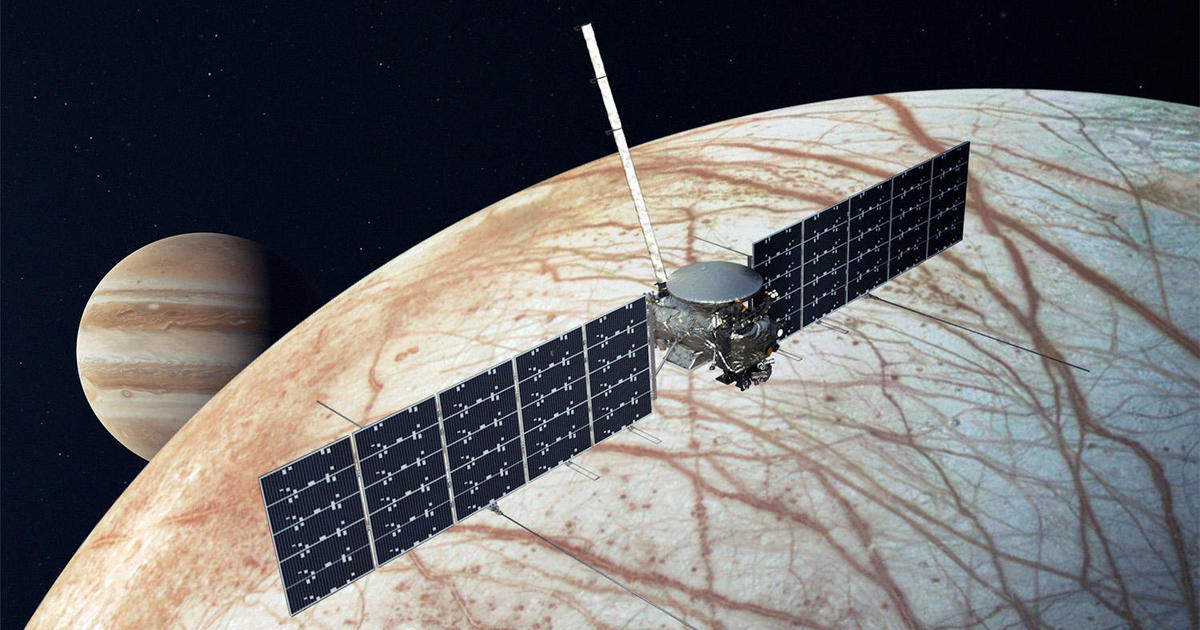
After an exhaustive review of suspect transistors in NASA’s Europa Clipper spacecraft, NASA managers have cleared the probe for launch next month as planned on a $5.2 billion mission to find out if a suspected sub-surface ocean on Jupiter’s icy moon Europa is a habitable environment.
The transistor issue cropped up in May, raising fears the scope of the Clipper’s mission might have to be reduced or the flight delayed for costly repairs.
But the review showed the transistors in question will, in effect, heal themselves during the 20 days between the high radiation doses the probe will receive during each of 49 close flybys of Europa, all of them deep in Jupiter’s powerful magnetic field and radiation environment.
In addition, onboard heaters can be used as needed to raise the temperature of affected transistors, improving the recovery process.
“After extensive testing and analysis of the transistors, the Europa Clipper project and I personally have high confidence we can complete the original mission for exploring Europa as planned,” said Jordan Evans, Europa Clipper project manager at NASA’s Jet Propulsion Laboratory.
The solar-powered Europa Clipper, one of NASA’s most ambitious planetary probes, is a “flagship” mission designed to make multiple close flybys of Europa to learn whether a subsurface salt water ocean beneath the frozen world’s icy crust could host a habitable environment.
If habitability can be confirmed, “just think of what that means, that there are two places in one solar system that have all the ingredients for life that are habitable right now at the same time,” said Curt Niebur, Europa Clipper program scientist at NASA Headquarters.
“Think of what that means when you extend that result to the billions and billions of other solar systems in this galaxy. Setting aside the ‘is there life?’ question on Europa, just the habitability question in and of itself opens up a huge new paradigm for searching for life in the galaxy.”
Discovered in 1610 by Galileo, Europa has been studied by NASA’s Voyager probes and, much more extensively, by the agency’s aptly-named Galileo orbiter in the 1990s, which made a dozen close flybys.
The spacecraft discovered that Jupiter’s magnetic field was disrupted around Europa, implying an electrically conductive fluid deep within the moon. Given Europa’s frozen crust, the most likely explanation is a sub-surface salt water ocean, kept warm by tidal flexing, the repetitive squeezing by Jupiter’s enormous gravity as the moon swings through its orbit.
The Europa Clipper is not designed to search for signs of life on or below Europa’s crust. But confirming the presence of a hidden sea and determining its habitability would be a major step forward in the search for places in the solar system and beyond where life, as currently defined, could exist.
“This is an epic mission,” Niebur said. “It’s a chance for us to explore not a world that might have been habitable billions of years ago, but a world that might be habitable today, right now,”
“A chance to do the first exploration of this new kind of world that we’ve discovered very recently called an ocean world, that is just totally immersed and covered in a liquid water ocean, completely unlike anything we’ve seen before. That’s what Europa Clipper and her team are going to unveil for us.”
Scheduled for launch from the Kennedy Space Center on Oct. 10 atop a SpaceX Falcon Heavy rocket, the spacecraft will first fly past Mars in February, using the red planet’s gravity to send it toward another velocity-boosting flyby of Earth in December 2026.
Only then will the Europa Clipper be traveling fast enough to head out into deep space on a trajectory to Jupiter. Even so, the probe won’t reach its target until April 2030, using its thrusters to brake into an initial orbit around the giant planet.
Five months later, the first in a series of close flybys of several moons will be needed to set up the first close encounter with Europa in the spring of 2031. During two science campaigns running through 2034, at least 49 close flybys of Europa are planned, including passes as low as 16 miles above the moon’s frozen surface.
The mission was progressing toward launch when engineers were alerted in May to a potentially serious problem with transistors used throughout the spacecraft. Similar components were found to fail at lower radiation doses than expected.
The radiation environment around Jupiter is powered by the planet’s titanic magnetic field, which traps and accelerates electrically charged particles from the solar wind and the volcanic moon Io. The radiation environment in the vicinity of Europa would kill an unprotected astronaut in a matter of hours.
As a result, Europa’s flight computer and other key components are protected in a radiation-resistant “vault.” Radiation “hardened” components are used throughout the spacecraft. But test data from the manufacturer showed similar components were failing at lower radiation levels than the Europa Clipper will experience.
But after months of testing, engineers concluded the spacecraft can complete its mission with no major modifications.
“We completed extensive testing to validate the transistors on the spacecraft,” Evans said. “We ran tests 24 hours a day over the last four months at multiple locations. We simulated flight-like conditions to illuminate any issues that the transistors might have over our four-year science mission across the variety of applications we have on the spacecraft.
“We put these representative transistors into these environments, irradiated entire circuits to see how the system behaves. … We replicated that transistor self-healing, or annealing as it’s called, that occurs by heating them to room temperature while they, essentially, (are out of) that intense radiation environment as we go around each orbit.”
Based on the results, he said, “we’re ready for our final launch preparations and reviews. We are ready for Europa.”
Science & Environment
SpaceX’s Polaris Dawn crew conducts first all-civilian spacewalk
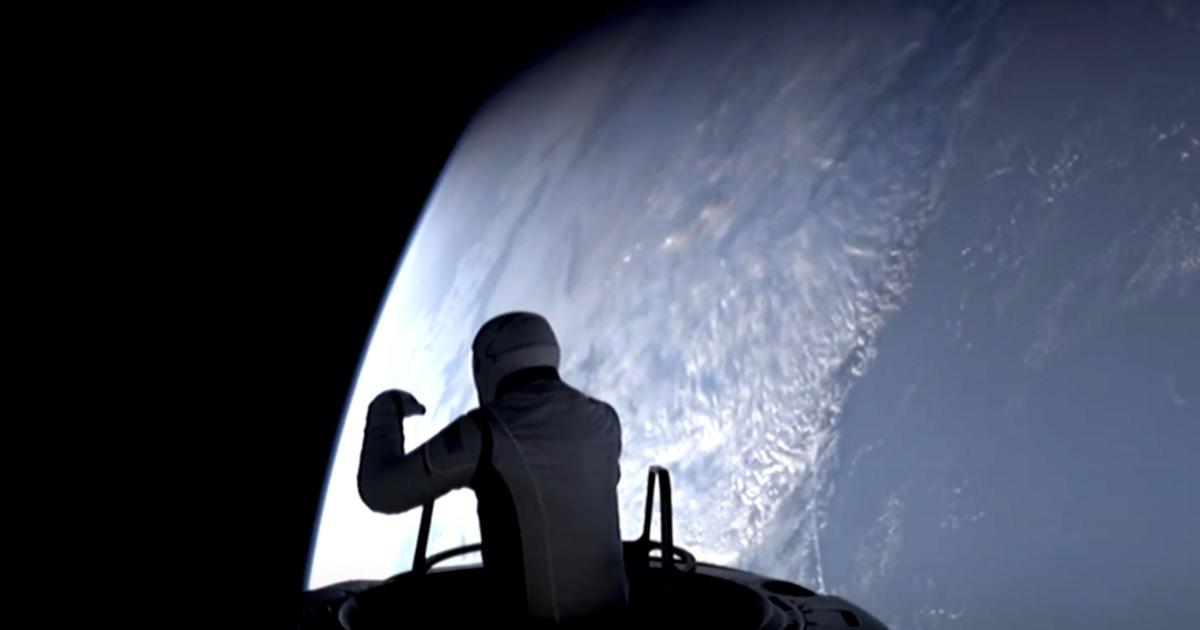
In another SpaceX milestone, billionaire Jared Isaacman and company crew trainer Sarah Gillis took turns floating just outside their Crew Dragon capsule early Thursday in the first privately-financed spacewalk in the history of space exploration.
As he took in his first unobstructed look at the Earth 458 miles below, Isaacman marveled at the serene, boundary-free view, saying “back at home, we all have a lot of work to do. But from here, it sure looks like a perfect world.”
With Polaris Dawn crewmates Anna Menon and Scott Poteet monitoring safety tethers and umbilicals inside the SpaceX Crew Dragon, airless with its hatch open, Isaacman ventured into open space around 6:51 a.m. EDT, using a scaffold-like “Skywalker” framework extending from the hatch for stability.
While his feet were just outside the hatch, he did not “free float” away from the Crew Dragon. The Space-X designed pressure suits were not equipped with their own oxygen supply or other life support equipment and relied instead on the 12-foot-long umbilicals to deliver air, power and communications.
As Isaacman and then Gillis floated one at a time just outside the hatch, they tested the comfort and mobility of their pressurized extra-vehicular activity, or EVA, suits, moving their arms, hands and legs through a series of positions to find out how much effort is required to carry out basic tasks.
“We’re going to make use of various mobility aids the SpaceX team has engineered, and it’ll look like we’re doing a little bit of a dance,” Isaacman said before launch. “The idea is to learn as much as we possibly can about this suit and get it back to the engineers to inform future suit design evolutions.”
Cameras mounted inside and outside the Crew Dragon, along with others attached to the spacewalkers’ helmets, provided wide-angle views of space and the Earth below as the ship sailed through an elliptical orbit with a low point of 121 miles and a high point of 458 miles — 200 miles higher than the International Space Station.
“It’s gorgeous,” Isaacman said, taking a moment to take in the view after carrying out his portion of the mobility tests.
The walk was declared finished at 7:58 a.m. EDT. SpaceX said everyone reported feeling “healthy” after the walk was completed.
The goal of the one-hour 46-minute spacewalk was to help company engineers perfect low-cost, easy-to-manufacture spacesuits for use by future commercial astronauts flying to the moon or Mars aboard SpaceX Super Heavy-Starship rockets.
“I think that this journey of creating affordable EVA suits that can be scaled up into mass production is a very worthwhile one,” said Isaacman, who chartered SpaceX’s first fully commercial flight to orbit in 2021. “There’s going to be an armada of Starships arriving on Mars at some point in the future, and those people are going to have to be able to get out of it and walk around and do important things.”
Isaacman, Poteet, Menon and Gillis blasted off Tuesday from the Kennedy Space Center atop a SpaceX Falcon 9 rocket. The crew accomplished the first major goal of the flight right off the bat, climbing to an altitude of 870 miles — higher than any piloted spacecraft since the Apollo moon program 60 years ago.
The high point, or apogee, of the orbit then was lowered to 458 miles for the spacewalk and the remainder of the five-day mission.
To prevent decompression sickness, also known as the bends, during the crew’s transition from sea-level pressure to the reduced 5 psi pressure in their spacesuits and back, flight controllers began a 45-hour process shortly after launch to boost oxygen levels in the cabin while slowly decreasing air pressure to help remove nitrogen from the crew’s bloodstreams.
“We don’t anticipate experiencing (the bends), because a ton of robust preparation has gone into developing this pre-breathe protocol, significantly reducing that risk,” said Menon, a former biomedical flight controller for NASA. “But we’re prepared if we need it.”
It didn’t appear any such steps were needed.
The Crew Dragon does not have an airlock and its life support system was not designed to support spacewalks. Required modifications included “adding a lot more oxygen to the spacecraft so that we can feed oxygen to four suits through umbilicals for the full duration of the spacewalk,” Gillis said.
“There have been upgrades and additions to the environmental sensing suite in the spacecraft to make sure we have really good insight, both before, during and after exposure to vacuum. And … an entirely new system, a nitrogen repress system” to boost the cabin back up to normal pressure after the spacewalk.
Along with the Skywalker scaffold, which extends just beyond the forward hatch, a motor drive system was added to assist with hatch opening and closing and upgraded seals were put in place to ensure an airtight fit.
NASA astronaut Ed White carried out the first U.S. spacewalk on June 3, 1965, floating free of his Gemini 4 capsule at the end of a long tether. Since then, NASA astronauts, Russian cosmonauts, Chinese taikonauts and astronauts from space station partner nations have carried out more than 470 government-sponsored spacewalks.
Isaacman said iconic photos of White floating outside his Gemini capsule against the backdrop of Earth and space were inspirational, but he and Gillis ruled out floating free of the Crew Dragon. And that was by design.
“We’re not going to be doing the Ed White float,” Isaacman told CBS News before launch. “That might look cool, but it doesn’t really help SpaceX learn a lot about the performance (of the spacesuit). It’s not very useful or helpful for figuring out how to be able to to work in a suit.”
To that end, he and Gillis will work through a “matrix” of planned motions to get a feel for how the suit’s multiple joints move while pressurized, to test the performance of an innovative heads-up display in the helmet, better understand how the air-cooled suits deal with the extreme temperatures of space and a variety of other factors.
The suit “includes all sorts of technology, including a heads-up display, a helmet camera, an entirely new architecture for joint mobility,” Gillis said. “There’s thermal insulation throughout the suit, including a copper and indium tin oxide visor that both provides thermal protection and solar protection.”
In addition, she said, “there’s all sorts of redundancy, both in the oxygen supply feed to the suit, as well as all of the valves, all of the seals across the suit. It’s an incredible suit.”
The heads-up display, which will project critical data on the lower left side of the helmet visor, is a feature NASA’s decades old space station suits do not have.
“During the EVA, we’ll have insight into our suit, pressure, temperature, relative humidity and then also an understanding of how much oxygen we’ve used throughout the EVA. So some key pieces of telemetry right there. And it’s it’s really cool (that) with any lighting you can still see it.”
The Polaris Dawn mission is the first of three planned by Isaacman in cooperation with Elon Musk. The second flight will be another Crew Dragon mission while the third will be the first piloted flight of SpaceX’s huge Super Heavy-Starship rocket, now under development in Texas.
It’s not known how much Isaacman is paying for the flights or how much SpaceX funded on its own. Asked if he could share any details, the entrepreneur, jet pilot and adventurer said “not a chance.”
The mission, SpaceX’s fifth commercial Crew Dragon flight to orbit and its 14th including NASA flights, is expected to last five days, ending with splashdown off the coast of Florida.
-

 Sport5 hours ago
Sport5 hours agoJoshua vs Dubois: Chris Eubank Jr says ‘AJ’ could beat Tyson Fury and any other heavyweight in the world
-

 News1 day ago
News1 day agoYou’re a Hypocrite, And So Am I
-

 Technology4 hours ago
Technology4 hours agoiPhone 15 Pro Max Camera Review: Depth and Reach
-

 News6 hours ago
News6 hours agoIsrael strikes Lebanese targets as Hizbollah chief warns of ‘red lines’ crossed
-

 CryptoCurrency5 hours ago
CryptoCurrency5 hours agoJourneys: Robby Yung on Animoca’s Web3 investments, TON and the Mocaverse
-

 CryptoCurrency5 hours ago
CryptoCurrency5 hours agoDecentraland X account hacked, phishing scam targets MANA airdrop
-

 CryptoCurrency5 hours ago
CryptoCurrency5 hours agoCertiK Ventures discloses $45M investment plan to boost Web3
-

 Science & Environment8 hours ago
Science & Environment8 hours ago‘Running of the bulls’ festival crowds move like charged particles
-

 Sport5 hours ago
Sport5 hours agoUFC Edmonton fight card revealed, including Brandon Moreno vs. Amir Albazi headliner
-

 Football4 hours ago
Football4 hours agoNiamh Charles: Chelsea defender has successful shoulder surgery
-

 CryptoCurrency4 hours ago
CryptoCurrency4 hours agoEthereum is a 'contrarian bet' into 2025, says Bitwise exec
-

 Science & Environment8 hours ago
Science & Environment8 hours agoRethinking space and time could let us do away with dark matter
-

 Science & Environment8 hours ago
Science & Environment8 hours agoHow one theory ties together everything we know about the universe
-

 News3 hours ago
News3 hours agoBrian Tyree Henry on voicing young Megatron, his love for villain roles
-

 CryptoCurrency5 hours ago
CryptoCurrency5 hours ago2 auditors miss $27M Penpie flaw, Pythia’s ‘claim rewards’ bug: Crypto-Sec
-

 CryptoCurrency5 hours ago
CryptoCurrency5 hours agoArthur Hayes’ ‘sub $50K’ Bitcoin call, Mt. Gox CEO’s new exchange, and more: Hodler’s Digest, Sept. 1 – 7
-

 CryptoCurrency5 hours ago
CryptoCurrency5 hours agoTreason in Taiwan paid in Tether, East’s crypto exchange resurgence: Asia Express
-

 CryptoCurrency5 hours ago
CryptoCurrency5 hours agoLeaked Chainalysis video suggests Monero transactions may be traceable
-

 CryptoCurrency5 hours ago
CryptoCurrency5 hours agoLouisiana takes first crypto payment over Bitcoin Lightning
-

 CryptoCurrency5 hours ago
CryptoCurrency5 hours agoAre there ‘too many’ blockchains for gaming? Sui’s randomness feature: Web3 Gamer
-

 CryptoCurrency5 hours ago
CryptoCurrency5 hours agoCrypto whales like Humpy are gaming DAO votes — but there are solutions
-

 CryptoCurrency5 hours ago
CryptoCurrency5 hours agoHelp! My parents are addicted to Pi Network crypto tapper
-

 CryptoCurrency5 hours ago
CryptoCurrency5 hours ago$12.1M fraud suspect with ‘new face’ arrested, crypto scam boiler rooms busted: Asia Express
-

 CryptoCurrency5 hours ago
CryptoCurrency5 hours ago‘Everything feels like it’s going to shit’: Peter McCormack reveals new podcast
-

 Science & Environment8 hours ago
Science & Environment8 hours agoFuture of fusion: How the UK’s JET reactor paved the way for ITER
-

 CryptoCurrency5 hours ago
CryptoCurrency5 hours agoSEC sues ‘fake’ crypto exchanges in first action on pig butchering scams
-

 CryptoCurrency5 hours ago
CryptoCurrency5 hours agoFed rate cut may be politically motivated, will increase inflation: Arthur Hayes
-

 CryptoCurrency5 hours ago
CryptoCurrency5 hours agoBinance CEO says task force is working ‘across the clock’ to free exec in Nigeria
-

 CryptoCurrency5 hours ago
CryptoCurrency5 hours agoBitcoin price hits $62.6K as Fed 'crisis' move sparks US stocks warning
-

 CryptoCurrency5 hours ago
CryptoCurrency5 hours agoCZ and Binance face new lawsuit, RFK Jr suspends campaign, and more: Hodler’s Digest Aug. 18 – 24
-

 CryptoCurrency5 hours ago
CryptoCurrency5 hours agoBitcoin miners steamrolled after electricity thefts, exchange ‘closure’ scam: Asia Express
-

 CryptoCurrency5 hours ago
CryptoCurrency5 hours agoCardano founder to meet Argentina president Javier Milei
-

 CryptoCurrency5 hours ago
CryptoCurrency5 hours agoMemecoins not the ‘right move’ for celebs, but DApps might be — Skale Labs CMO
-

 CryptoCurrency5 hours ago
CryptoCurrency5 hours agoDorsey’s ‘marketplace of algorithms’ could fix social media… so why hasn’t it?
-

 CryptoCurrency5 hours ago
CryptoCurrency5 hours agoTelegram bot Banana Gun’s users drained of over $1.9M
-

 CryptoCurrency5 hours ago
CryptoCurrency5 hours agoLow users, sex predators kill Korean metaverses, 3AC sues Terra: Asia Express
-

 CryptoCurrency5 hours ago
CryptoCurrency5 hours agoSEC asks court for four months to produce documents for Coinbase
-

 CryptoCurrency5 hours ago
CryptoCurrency5 hours agoBlockdaemon mulls 2026 IPO: Report
-
Business4 hours ago
How Labour donor’s largesse tarnished government’s squeaky clean image
-
Business3 hours ago
UK hospitals with potentially dangerous concrete to be redeveloped
-
Business3 hours ago
Axel Springer top team close to making eight times their money in KKR deal
-

 News3 hours ago
News3 hours ago“Beast Games” contestants sue MrBeast’s production company over “chronic mistreatment”
-

 News3 hours ago
News3 hours agoSean “Diddy” Combs denied bail again in federal sex trafficking case
-

 News3 hours ago
News3 hours agoSean “Diddy” Combs denied bail again in federal sex trafficking case in New York
-

 News3 hours ago
News3 hours agoBrian Tyree Henry on his love for playing villains ahead of “Transformers One” release
-

 News3 hours ago
News3 hours agoBrian Tyree Henry on voicing young Megatron, his love for villain roles
-

 News7 hours ago
News7 hours agoPolice chief says Daniel Greenwood 'used rank to pursue junior officer'
-

 Technology3 days ago
Technology3 days agoYouTube restricts teenager access to fitness videos
-

 News7 hours ago
News7 hours agoChurch same-sex split affecting bishop appointments
-

 Science & Environment8 hours ago
Science & Environment8 hours agoPhysicists have worked out how to melt any material
-

 Politics19 hours ago
Politics19 hours agoWhat is the House of Lords, how does it work and how is it changing?
-

 Politics20 hours ago
Politics20 hours agoKeir Starmer facing flashpoints with the trade unions
-

 Technology6 hours ago
Technology6 hours agoFivetran targets data security by adding Hybrid Deployment
-
News5 hours ago
Freed Between the Lines: Banned Books Week
-

 Sport5 hours ago
Sport5 hours agoUFC’s Dan Ige feels confident after Diego Lopes dominates Brian Ortega
-

 MMA5 hours ago
MMA5 hours agoUFC’s Cory Sandhagen says Deiveson Figueiredo turned down fight offer
-

 MMA5 hours ago
MMA5 hours agoDiego Lopes declines Movsar Evloev’s request to step in at UFC 307
-

 Football4 hours ago
Football4 hours agoSlot's midfield tweak key to Liverpool victory in Milan
-

 Science & Environment8 hours ago
Science & Environment8 hours agoHow to wrap your head around the most mind-bending theories of reality
-

 Fashion Models4 hours ago
Fashion Models4 hours agoMiranda Kerr nude
-

 Fashion Models4 hours ago
Fashion Models4 hours ago“Playmate of the Year” magazine covers of Playboy from 1971–1980
-

 Health & fitness1 day ago
Health & fitness1 day ago11 reasons why you should stop your fizzy drink habit in 2022
-

 Politics4 hours ago
Politics4 hours agoLabour MP urges UK government to nationalise Grangemouth refinery
-

 News4 days ago
News4 days agoIndia Now Moves from Deliberations to Deliverables on Crimes Against Women
-

 Science & Environment6 hours ago
Science & Environment6 hours agoOdd quantum property may let us chill things closer to absolute zero
-

 Science & Environment14 hours ago
Science & Environment14 hours agoQuantum forces used to automatically assemble tiny device
-

 Entertainment3 hours ago
Entertainment3 hours ago“Jimmy Carter 100” concert celebrates former president’s 100th birthday
-

 Science & Environment16 hours ago
Science & Environment16 hours agoSunlight-trapping device can generate temperatures over 1000°C
-

 News3 hours ago
News3 hours agoJoe Posnanski revisits iconic football moments in new book, “Why We Love Football”
-

 Health & fitness2 days ago
Health & fitness2 days agoHow to adopt mindful drinking in 2022
-

 Health & fitness2 days ago
Health & fitness2 days agoWhen Britons need GoFundMe to pay for surgery, it’s clear the NHS backlog is a political time bomb
-

 Science & Environment18 hours ago
Science & Environment18 hours agoQuantum to cosmos: Why scale is vital to our understanding of reality
-
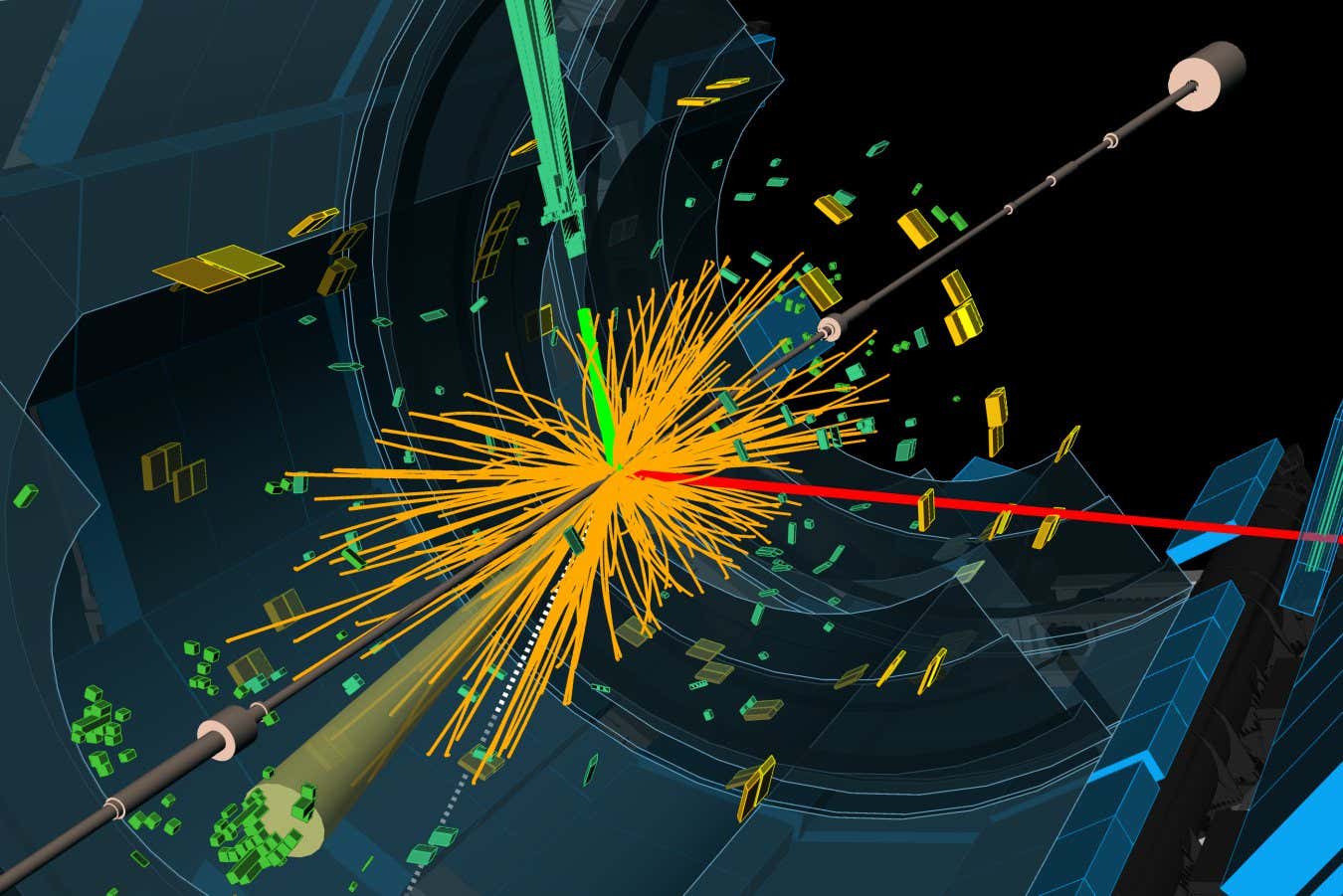
 Science & Environment1 day ago
Science & Environment1 day agoParticle physicists may have solved a strange mystery about the muon
-

 Science & Environment19 hours ago
Science & Environment19 hours agoQuantum time travel: The experiment to ‘send a particle into the past’
-

 Science & Environment17 hours ago
Science & Environment17 hours agoX-ray laser fires most powerful pulse ever recorded
-

 Science & Environment16 hours ago
Science & Environment16 hours agoDoughnut-shaped swirls of laser light can be used to transmit images
-

 Science & Environment15 hours ago
Science & Environment15 hours agoBeing in two places at once could make a quantum battery charge faster
-
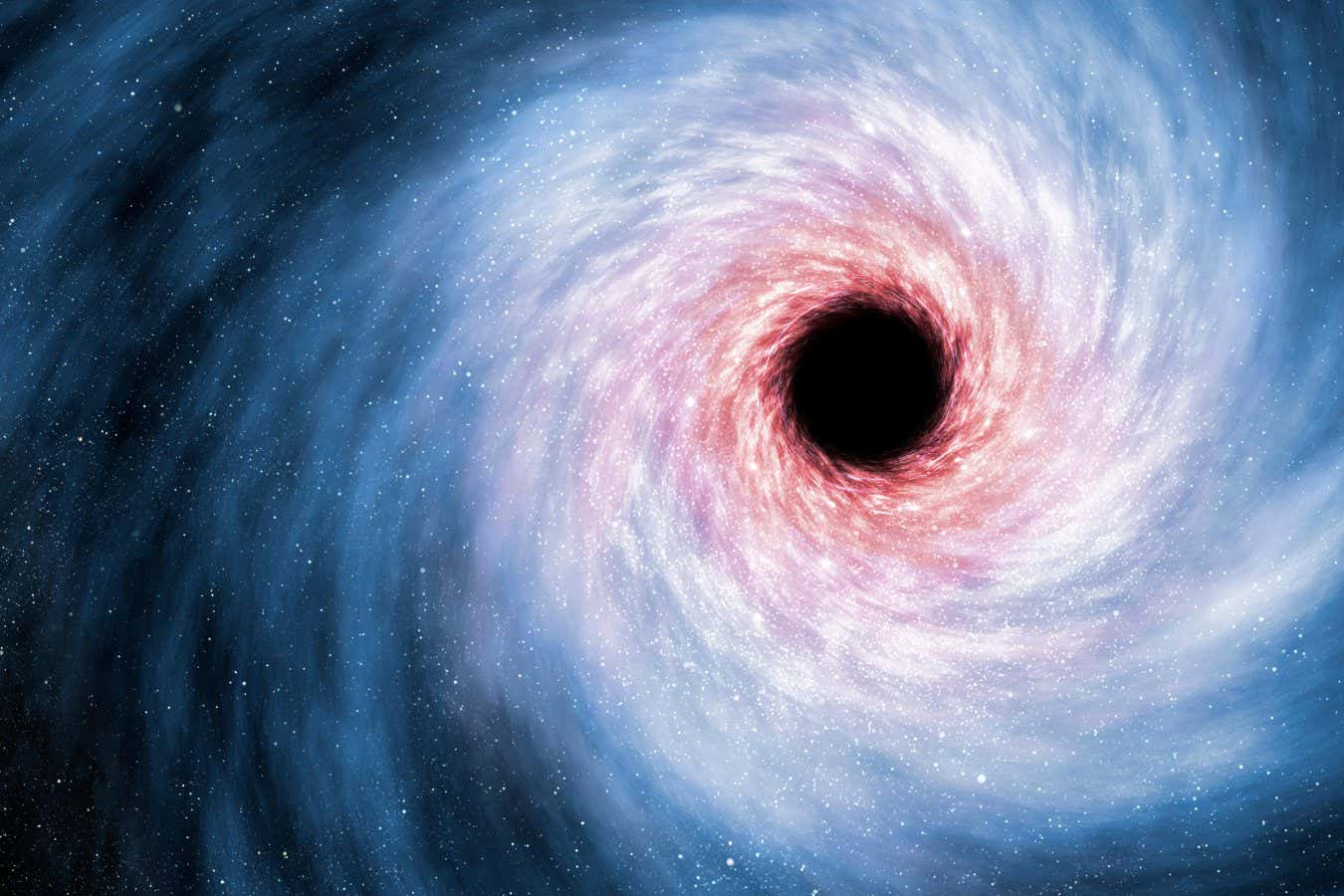
 Science & Environment14 hours ago
Science & Environment14 hours agoBlack holes scramble information – but may not be the best at it
-

 CryptoCurrency5 hours ago
CryptoCurrency5 hours agoBitcoin will ‘start ripping’ as Trump’s polls improve: Felix Hartmann, X Hall of Flame
-

 CryptoCurrency5 hours ago
CryptoCurrency5 hours agoCrypto scammers orchestrate massive hack on X but barely made $8K
-

 CryptoCurrency5 hours ago
CryptoCurrency5 hours agoReal-world asset tokenization is the crypto killer app — Polygon exec
-

 Science & Environment8 hours ago
Science & Environment8 hours ago‘Sound laser’ is the most powerful ever made
-

 Science & Environment8 hours ago
Science & Environment8 hours agoJupiter’s stormy surface replicated in lab
-

 Science & Environment8 hours ago
Science & Environment8 hours agoA tale of two mysteries: ghostly neutrinos and the proton decay puzzle
-
Politics8 hours ago
Owen Paterson loses ECHR appeal against report that preceded downfall | Owen Paterson
-

 CryptoCurrency5 hours ago
CryptoCurrency5 hours agoBitcoin rallies to $61K, but derivatives traders are still skeptical — Here is why
-
CryptoCurrency5 hours ago
Inside the Pig Butchering Scam: Real Stories from Victims
-

 CryptoCurrency5 hours ago
CryptoCurrency5 hours agoBitcoin bull rally far from over, MetaMask partners with Mastercard, and more: Hodler’s Digest Aug 11 – 17
-

 CryptoCurrency5 hours ago
CryptoCurrency5 hours agoVonMises bought 60 CryptoPunks in a month before the price spiked: NFT Collector
-

 CryptoCurrency5 hours ago
CryptoCurrency5 hours ago‘Silly’ to shade Ethereum, the ‘Microsoft of blockchains’ — Bitwise exec
-

 CryptoCurrency5 hours ago
CryptoCurrency5 hours agoVitalik tells Ethereum L2s ‘Stage 1 or GTFO’ — Who makes the cut?
-

 CryptoCurrency5 hours ago
CryptoCurrency5 hours agoEthereum falls to new 42-month low vs. Bitcoin — Bottom or more pain ahead?
-
Business5 hours ago
Thames Water seeks extension on debt terms to avoid renationalisation
-
Politics3 hours ago
‘Hundreds’ of prisoners freed early in England and Wales not fitted with tags | Prisons and probation
-

 Politics3 hours ago
Politics3 hours agoParties, brothels and drugs plague holiday let neighbours, say MPs
-

 News3 hours ago
News3 hours ago“Beyond the Gates” cast announced
-

 News3 hours ago
News3 hours agoEddie Vedder on the origin of Pearl Jam: “It was heaven”
-

 CryptoCurrency3 hours ago
CryptoCurrency3 hours agoCoinbase’s cbBTC surges to third-largest wrapped BTC token in just one week
-

 News3 hours ago
News3 hours agoJames Harding says plan to buy Observer is boost to ‘liberal journalism’
-
Business2 hours ago
John Paulson brushes aside Wall Street worries about Donald Trump’s tariff plan













You must be logged in to post a comment Login